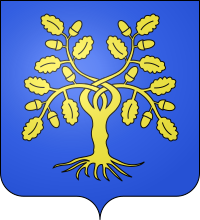This Article is taken from, and can be read in full at, FR. Z's BLOG
Since it is a Friday of Lent, a First Friday, do please Pray The
Act of Reparation.
Here also are my audio projects of The Way of The Cross.
What we need right now is PRAYER, especially at the end of this hard week. And remember to
GO TO CONFESSION !!!
Also, these days, we especially need to Pray for Priests, which includes Bishops and everyone up the hierarchy
There are many Priests, today, who – for one reason or another – are failing in their duty to teach with clarity what The Church has always taught.
There are other Priests who are becoming discouraged and afraid concerning what might befall them if they remain clear and faithful. Yet other Priests are mired in sins. And always there are those Priests who are infirm, old, nearing their judgment.
Hence, this year, I’ve added a new version, The Way Of The Cross For Priests from The Benedictines of Silverstream Priory.
HERE.
Would you consider getting copies of this for your Priests where you are ?
They also have beautiful Altar Cards
HERE.
In my reading, I left out the references to the Scripture passages which are quoted, for they would not be read in a public recitation. I urge you, however, to obtain a hard copy so that, if you wish, you can find them. Even more, I urge you Lay People to get a copy and then Pray with it for Priests.
Below are readings of The Via Crucis, The Way of The Cross, composed by
Joseph Card. Ratzinger, later Pope Benedict XVI, for the 2005 Good Friday observance at The Colosseum in Rome.
Saint Alphonus Liguori.
Blessed John Henry Newman.
Saint Francis of Assisi (according to the method . . . )
Silverstream Priory – The Way Of The Cross For Priests.
There are two versions of "The Way" by Saint Alphonsus Liguori. One is plain with just my voice. The other is the same voice recording, but with The Gregorian Chant Sequence Stabat Mater interlaced between The Stations.
There are two versions of "The Way", by Saint Alphonsus Liguori. One is plain, with just my voice. The other is the same voice recording but with the Gregorian chant Sequence
Stabat Mater interlaced between The Stations.
You can gain a Plenary Indulgence, under the usual conditions of Confession and Communion, within a few days of the work, and detachment even from Venial Sin. From The Handbook of Indulgences:
63. Exercise of The Way of The Cross (
Viae Crucis exercitium).
A Plenary Indulgence is granted to The Faithful, who make the pious exercise of The Way of The Cross.
The gaining of the Plenary Indulgence is regulated by the following norms:
The pious exercise must be made before Stations of The Way of The Cross, legitimately erected.
For the erection of The Way of The Cross, Fourteen Crosses are required, to which it is customary to add Fourteen Pictures, or, Images, which represent The Stations of Jerusalem.
According to the more common practice, the pious exercise consists of Fourteen Pious Readings, to which some vocal Prayers are added. However, nothing more is required than a pious Meditation on The Passion and Death of The Lord, which need not be a particular consideration of the individual Mysteries of The stations.
A movement from one Station to the next is required.
I believe that, if you follow The Holy Father’s Way of The Cross on Good Friday, even by television, the Indulgence is available.
If the pious exercise is made publicly and if it is not possible for all taking part to go in an orderly way from Station to Station, it suffices if, at least, the one conducting the exercise goes from Station to Station, the others remaining in their place.
Those who are “impeded” can gain the same Indulgence, if they spend at least one half an hour in pious Reading and Meditation on The Passion and Death of Our Lord Jesus Christ.
For those belonging to Eastern Rites, among whom this pious exercise is not practiced, the respective Patriarchs can determine some other pious exercise in memory of The Passion and Death of Our Lord Jesus Christ for the gaining of this Indulgence.
Meanwhile, from a reader last year . . .
Just a quick note to say thank you for providing your recordings of The Stations of The Cross. I am completely blind and had committed to making this part of my Lenten practices, only to have the Braille display, from which I read promptly, die. I had been struggling to find a recording of Saint Alphonsus’ version.
May God bless you !
If these recordings are helpful to you, please say a Prayer for me, especially if you use The Way Of The Cross For Priests.








































